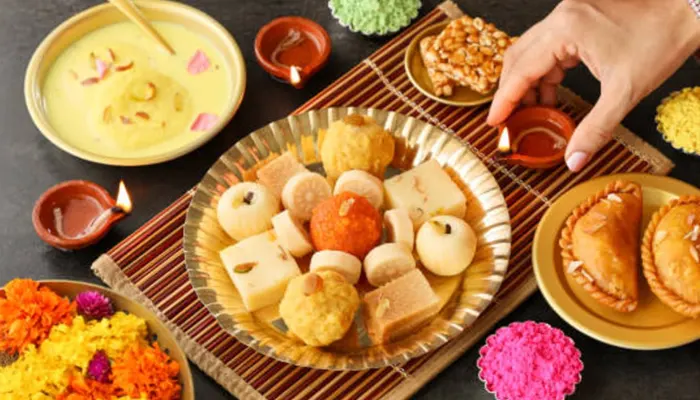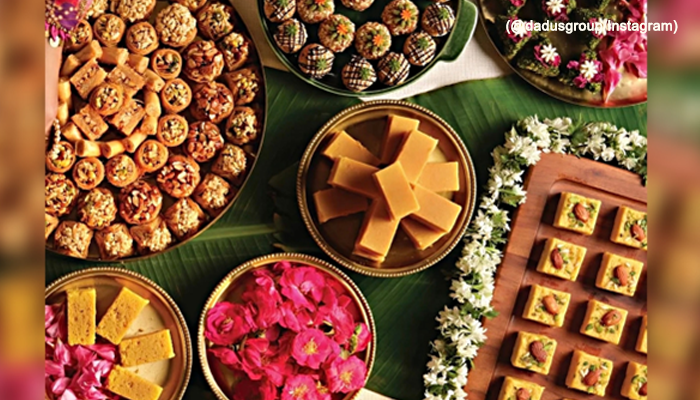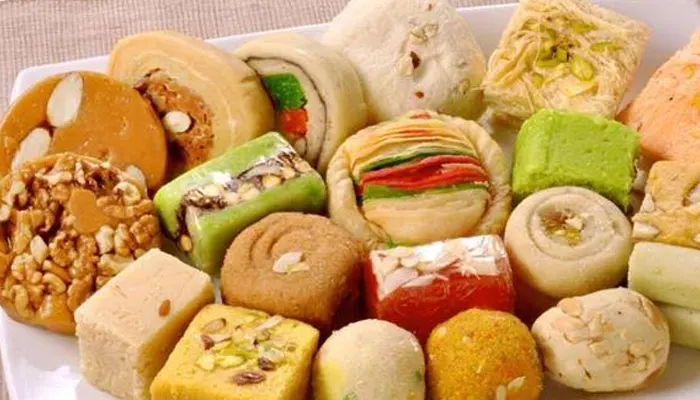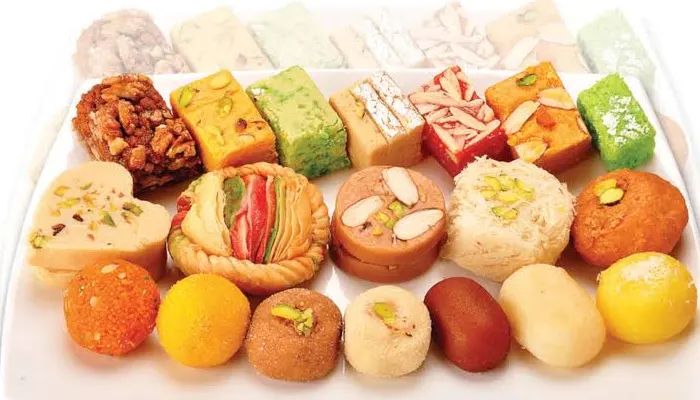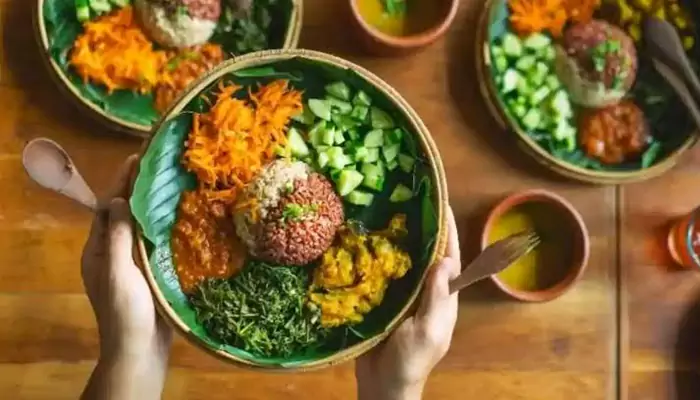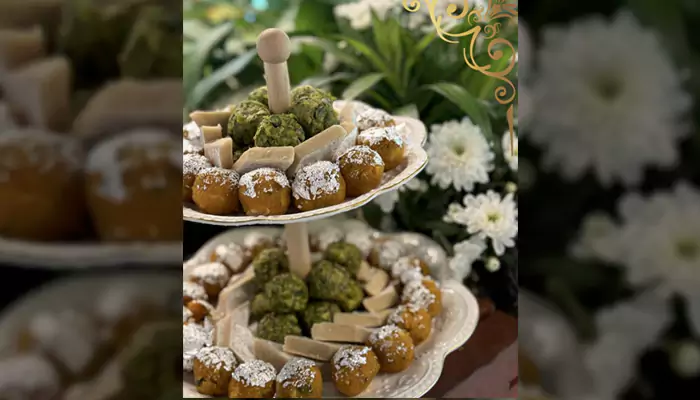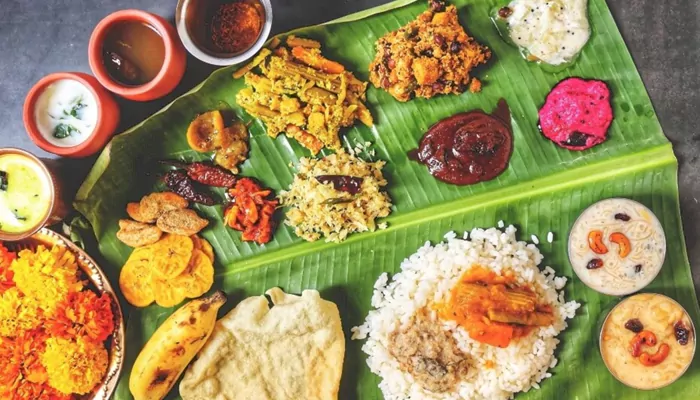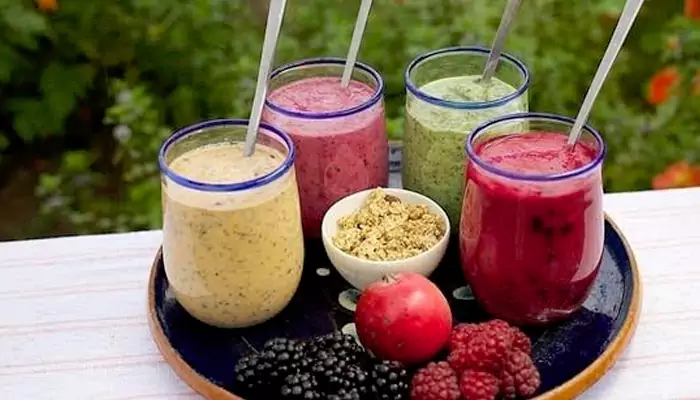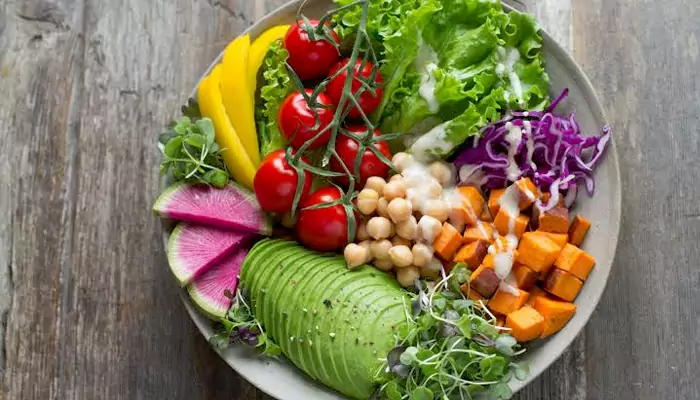From Labra to Mishti Doi: The Iconic Festive Foods of Bengali Durga Ashtami Bhog
- Devyani
- 1 month ago
- 4 minutes read
A delicious journey through the flavors that make Durga Ashtami more than just a prayer, but a feast for the soul.
Ever wondered what divine tastes like? For Bengalis during Durga Puja, it’s not a philosophical question—it’s a delicious, tangible reality served on a banana leaf. The culmination of this love affair with food is the Ashtami Bhog, the sacred food offered to Goddess Durga on the eighth day. This isn’t your everyday meal; it’s a symphony of flavors where simplicity meets divinity. So, let's pull up a chair and dig into what makes this feast so incredibly special.
The Heart of the Feast: Niramish, But Never Bland
(@365daysofeating/Instagram)
First thing’s first: the bhog is strictly niramish. That’s the Bengali term for a lacto-vegetarian diet that also excludes onions and garlic. Wait, no onion and garlic? I know, I know. To any food lover, that sounds like a recipe for disaster. But trust me, Bengali grandmothers have turned this constraint into their superpower. They wield spices like artists, creating layers of flavor that are deep, aromatic, and utterly mind-blowing without those alliums. It’s culinary magic at its finest.
The Main Event: The Humble yet Mighty Labra
If the bhog had a king, it would be Labra. This isn’t just a mixed vegetable curry; it’s the soul of the meal. Picture a medley of seasonal veggies—perhaps pumpkin, potato, eggplant, radish, and beans—all slow-cooked together in a giant pot until they meld into a comforting, spiced harmony. The key is the panch phoron, a classic Bengali five-spice blend (cumin, fennel, fenugreek, nigella, and mustard seeds) sizzled in mustard oil that gives it its signature earthy, aromatic punch. It’s hearty, it’s wholesome, and it tastes like a hug from your grandma.
(@himbiharsehain/Instagram)
The Supporting Cast: More Than Just Sides
Labra may be the star, but it’s got a fantastic ensemble cast. There’s Chholar Dal, a sweet and savory lentil dish cooked with coconut chunks and a hint of cinnamon. Then comes the Begun Bhaja—simple slices of eggplant, fried to a crisp, golden perfection. It’s the textural hero, offering a satisfying crunch against the softness of the labra.
(@spicetripwithpoulami/Instagram)
And let’s not forget Payesh. This is Bengal’s version of rice kheer, a creamy rice pudding slow-simmered with milk, sugar, and fragrant dates palm jaggery (nolen gur), if you’re lucky. Studded with plump raisins and cashews, it’s the ultimate sweet, creamy finale to the savory spread.
(@banglarrannaghor/Instagram)
The Grand Finale: Mishti Doi
(@mygardenofrecipes/Instagram)
You can’t end a Bengali feast without something sweet, and the bhog is no exception. The crown jewel is often the Mishti Doi. This isn’t just sweetened yogurt. Oh no. It’s caramelized sugar or jaggery mixed into reduced milk and then set into earthen pots. The matka, or pot, gives it a unique, earthy aroma and a slightly tangy creaminess that is utterly irresistible. Each cool, sweet, tangy spoonful is a little taste of heaven, a perfect end to a sacred meal.
This entire spread, from the robust labra to the elegant mishti doi, is more than just food. It’s an emotion. It’s the sound of the dhak drums, the scent of incense, the feel of the communal banana leaf, and the joy of sharing a meal blessed by the Goddess. It’s a tradition that has been lovingly passed down through generations, and with every bite, you’re tasting a piece of Bengali culture itself. Pretty incredible for a meal with no garlic, right?

